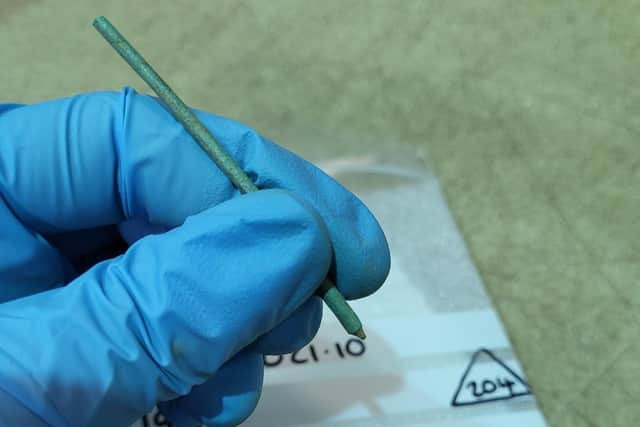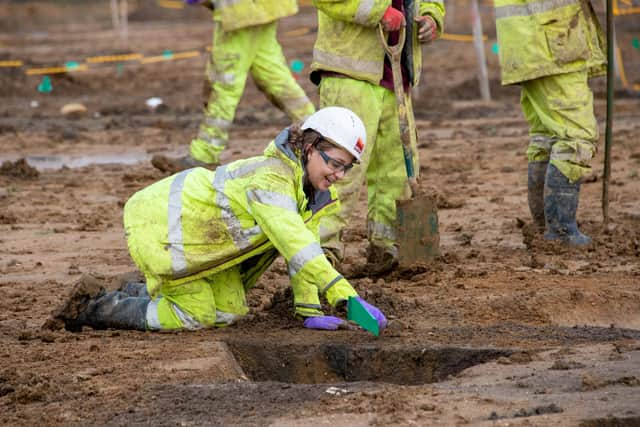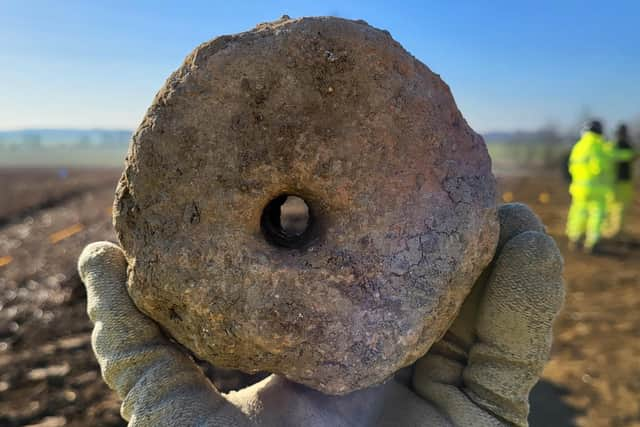Black Cat A428 dig: Evidence of wine and touchscreen tablets found (well, sort of)
and live on Freeview channel 276
Headless animals, possible vineyards and a stylus are among the latest discoveries unearthed by archaeologists working on A428 Black Cat to Caxton Gibbet upgrade.
Since 2021, archaeologists at the Museum of London Archaeology (MOLA) have been working with National Highways to build a detailed picture of what life was like in Bedfordshire and Cambridgeshire during the Iron Age (800 BC–AD 43) and Roman period (AD 43–410).


Advertisement
Advertisement
The team is investigating a vast area of land – the equivalent to 89 full-sized football pitches – making it one of the largest digs undertaken in the region. And new discoveries continue to be made.
In the lab, environmental evidence is revealing luxuries enjoyed by the locals.
Archaeologists may even have found grape pollen in cores taken from waterlogged soil, suggesting vineyards were grown in this area during the Roman period.
Remains of animals, including sheep and pigs, reveal much about people’s diets. Sometimes the way these remains were disposed of contain further clues, such as the mixture of bones and pottery dumped in two separate pits in different settlements – possible evidence of ancient feasts.


Advertisement
Advertisement
But maybe the biggest surprise was in the form of a stylus. The Romans would have used it to write on their waxed tablets – just like modern day digital tablets. Styli were formed with a pointed end to write on the wax, and a trapezoidal one to erase the written words by smoothing the waxed surface flat again.
Simon Markus, MOLA project manager, said: “These excavations are super exciting, and give us the unusual opportunity to understand an entire ancient landscape.”
TIMELINE OF THE SITE
Neolithic (c. 4000–2200 BC) or earlier: the discovery of stone tools suggest people were in the area


800 BC: Start of the Iron Age
400–100 BC: Settlements start to appear during the Middle Iron Age
Advertisement
Advertisement
AD 43: Romans arrive in Britain. While settlements continue to develop in the same area, new traded goods and technologies appear
AD 410: End of the Roman rule of Britain. By this time, some settlements are no longer inhabited
AD 650: All the settlements that have been excavated so far have been abandoned by this time